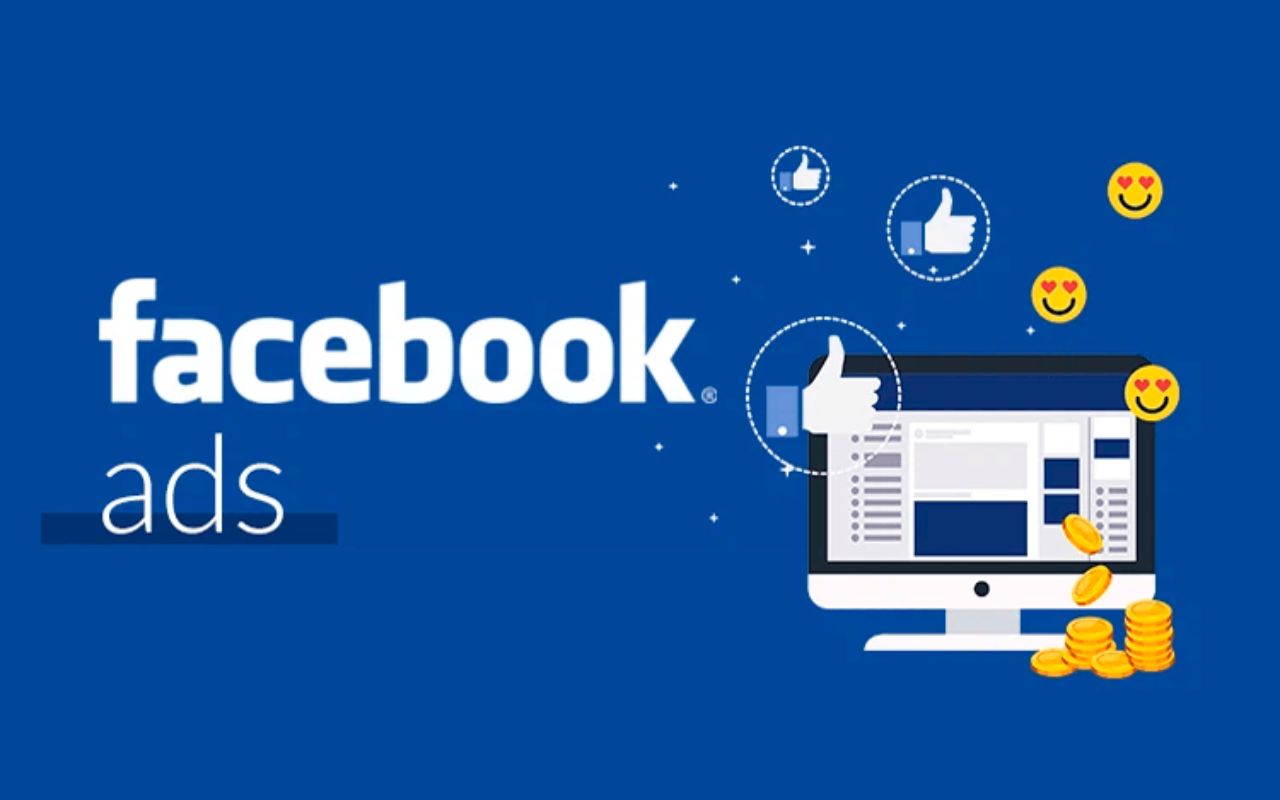
In the ever-evolving world of digital marketing, creating Facebook ads is a powerful tool for businesses aiming to boost their online presence and drive conversions. Facebook, with its vast user base of over 2.9 billion active users, offers unparalleled opportunities for brands to reach their target audience. However, crafting an effective ad requires more than just a catchy headline and a striking image. It involves strategic planning, understanding audience behavior, and optimizing the ad for performance. This guide provides a step-by-step approach to mastering Facebook ads, offering 12 expert strategies to help you create ads that not only capture attention but also drive significant results.
What Are Facebook Ads?
Facebook ads are paid messages that businesses use to promote their products, services, or brand to a specific audience on Facebook. These ads appear in users’ feeds, stories, or sidebars, depending on the ad type and placement. Facebook offers a variety of ad formats, including photo ads, video ads, carousel ads, and more. What sets Facebook ads apart is the platform’s advanced targeting capabilities, allowing businesses to reach users based on demographics, interests, behaviors, and even past interactions with the brand.
Why Facebook Ads Are Essential for Your Business
In today’s digital landscape, organic reach on social media is becoming increasingly challenging, with algorithm changes often limiting the visibility of unpaid content. Creating Facebook ads allows businesses to cut through the noise and ensure their message reaches the right people. Facebook’s sophisticated targeting options enable businesses to pinpoint their ideal audience, ensuring that ads are seen by those most likely to convert. Additionally, the platform provides detailed analytics, allowing businesses to measure ad performance and optimize campaigns for better results.

12 Expert Strategies for Creating Facebook Ads That Drive High Conversions
1. Define Clear Objectives
Defining clear objectives is the cornerstone of a successful Facebook ad campaign. Before diving into the ad creation process, it’s essential to establish what you hope to achieve. Whether your goal is to increase brand awareness, drive traffic to your website, generate leads, or boost sales, having a well-defined objective will guide your ad strategy. This clarity allows you to choose the appropriate ad format, targeting options, and call to action that aligns with your business goals.
For example, if your primary objective is to drive website traffic, consider using a link ad with a compelling CTA that directs users to a specific landing page. On the other hand, if you’re focused on generating leads, a lead generation ad format might be more effective, allowing users to submit their information directly within the ad. By aligning your ad strategy with your business objectives, you can ensure that each ad you create is purpose-driven and set up for success.
2. Understand Your Audience
Understanding your audience is crucial to creating Facebook ads that resonate and convert. Facebook’s powerful targeting options allow you to reach specific segments of users based on demographics, interests, behaviors, and even past interactions with your brand. However, to make the most of these tools, you need a deep understanding of who your audience is. Utilize Facebook’s Audience Insights tool to gather valuable data on your target demographic. This tool provides insights into age, gender, location, interests, and purchasing behavior, which are vital in shaping your ad content and targeting strategy.
Once you have a clear picture of your audience, you can tailor your ad messaging and creative to appeal directly to their needs and preferences. For example, if your audience primarily consists of young adults interested in fitness, your ad could highlight the latest trends in workout gear or healthy eating tips. By honing in on your audience’s specific interests and behaviors, you can create ads that are not only relevant but also highly engaging, leading to better performance and higher conversion rates.
3. Choose the Right Ad Format
Choosing the right ad format is a critical step in creating effective Facebook ads. Facebook offers a variety of ad formats, including photo ads, video ads, carousel ads, and more, each serving a unique purpose. The ad format you choose should align with your campaign objectives and the type of content you wish to promote. For instance, if you want to showcase multiple products or features, carousel ads are an excellent choice as they allow you to display up to ten images or videos in a single ad.
On the other hand, if you aim to engage your audience with a story or demonstrate a product in action, video ads are ideal. Videos can capture attention more effectively than static images, especially when they are optimized for mobile viewing. By selecting the appropriate ad format, you ensure that your content is presented in the most impactful way, which increases the likelihood of user engagement and conversion. Remember, the format should complement your message, not just serve as a vessel for it.
4. Craft Compelling Ad Copy
Crafting compelling ad copy is an art that requires both creativity and strategic thinking. Your ad copy must be concise, engaging, and directly aligned with your ad’s objective. It’s the hook that captures attention and the lure that drives action. Begin by identifying the core message you want to convey—whether it’s the unique value proposition of your product, a special offer, or a call to action. Use strong, action-oriented language that compels users to take the desired step, whether that’s clicking through to your website, signing up for a newsletter, or making a purchase.
To make your ad copy even more effective, focus on the benefits your audience will gain rather than just the features of your product. For instance, instead of saying, “Our app has 24/7 customer support,” you could say, “Get help whenever you need it with our 24/7 customer support, ensuring a smooth experience at all times.” This approach makes the ad more relatable and appealing, as it directly addresses the user’s needs and desires. Additionally, keeping your copy clear and free of jargon ensures it is accessible to a broader audience, enhancing the overall impact of your ad.
5. Use High-Quality Visuals
High-quality visuals are the cornerstone of effective Facebook ads. In a feed crowded with content, your visuals need to stand out and capture attention within seconds. Invest in professional-quality images or videos that are relevant to your ad’s message and resonate with your target audience. For product-based ads, showcasing the product in use or highlighting its key features can be particularly effective. Visuals that tell a story or evoke emotion tend to perform better as they create a connection with the viewer.
It’s also important to ensure that your visuals are optimized for Facebook’s platform. Videos, for instance, should be short—ideally under 15 seconds—to maintain user engagement. Additionally, ensure that your images are clear, well-lit, and free of clutter. Poor-quality visuals can undermine the credibility of your brand and reduce the effectiveness of your ad. Remember, the visual aspect of your ad is often the first thing users notice, so it needs to make a strong, positive impression.
6. Optimize Your Landing Page
Optimizing your landing page is a crucial step in the Facebook ad process. The landing page is where the conversion happens, so it needs to be perfectly aligned with your ad. If your ad promises a discount, the landing page should prominently feature that discount with clear instructions on how to claim it. A well-optimized landing page is not only visually appealing but also functional, with fast load times and a mobile-friendly design. A poor landing page experience can result in high bounce rates, meaning users leave the page without taking any action, which ultimately wastes your ad spend.
In addition to aligning with the ad, your landing page should be designed to lead users through the conversion process seamlessly. This could involve having a simple and easy-to-navigate layout, prominently placed CTAs, and minimal distractions. The goal is to make it as easy as possible for users to complete the desired action, whether it’s making a purchase, signing up for a newsletter, or filling out a form. By optimizing your landing page, you increase the chances of converting visitors into customers, making your ad campaign more effective and cost-efficient.
7. A/B Test Your Ads
A/B testing, or split testing, is a powerful method for optimizing your Facebook ads. By creating different versions of your ad with variations in elements such as the headline, image, CTA, or ad copy, you can test which version performs best. This data-driven approach allows you to make informed decisions about your ad strategy, leading to higher conversion rates and a better return on investment. For example, you might test a version of your ad with a straightforward CTA like “Buy Now” against another with a more playful CTA like “Get Yours Today!” to see which resonates more with your audience.
The key to successful A/B testing is to change only one element at a time. This way, you can accurately determine which specific change led to a difference in performance. Once you’ve identified the most effective elements, you can incorporate them into future ads to continually improve your campaign’s success. Regularly conducting A/B tests ensures that your ads stay relevant and engaging, keeping your audience interested and your conversion rates high.
8. Set a Realistic Budget
Setting a realistic budget is a crucial step in the Facebook ad creation process. While Facebook’s ad platform is accessible to businesses of all sizes, it’s important to plan your spending wisely to ensure a good return on investment. Facebook offers different bidding strategies, such as cost-per-click (CPC) and cost-per-impression (CPM), allowing you to control how much you’re willing to spend. Start with a modest budget, especially if you’re new to Facebook advertising, and gradually increase it as you gain more insights into what works best for your campaign.
Monitoring your ad performance is essential to making the most of your budget. Facebook’s ad manager provides detailed analytics, allowing you to track metrics such as click-through rates, conversions, and cost per conversion. If you notice that your ads are underperforming, you can adjust your budget or refine your targeting to get better results. Setting a realistic budget and regularly reviewing your ad performance ensures that you’re investing your marketing dollars in the most effective way possible.
9. Monitor Ad Performance
Monitoring ad performance is critical to the success of your Facebook ad campaigns. Facebook’s Ads Manager offers a comprehensive suite of analytics tools that allow you to track key performance indicators (KPIs) such as reach, engagement, click-through rates, and conversions. Regularly reviewing these metrics provides valuable insights into how well your ads are performing and whether they are meeting your campaign objectives. For instance, if you notice a high click-through rate but low conversions, it may indicate that your landing page needs optimization.
Beyond just tracking performance, monitoring allows you to make real-time adjustments to your campaigns. If an ad is not performing as expected, you can tweak elements such as the targeting, ad copy, or visuals to improve results. Continuous monitoring ensures that your ad spend is being used efficiently and that your campaigns are always optimized for maximum impact. This proactive approach to ad management helps you stay ahead of the competition and ensures that your marketing efforts deliver the best possible return on investment.
10. Utilize Facebook Pixel
Utilizing Facebook Pixel is essential for any business running Facebook ads. Facebook Pixel is a small piece of code that you place on your website to track user behavior after they click on your ad. This tool allows you to measure the effectiveness of your ads by monitoring actions such as purchases, sign-ups, and page views. By collecting this data, you can gain deeper insights into how users interact with your website, which helps you optimize your ads for better performance.
One of the most powerful features of Facebook Pixel is its ability to create custom audiences. For example, you can target users who have visited your website but haven’t completed a purchase, encouraging them to return and finish the transaction. Additionally, you can use this data to create lookalike audiences—new potential customers who share characteristics with your best-performing audiences. By leveraging Facebook Pixel, you can fine-tune your targeting, improve ad relevance, and ultimately drive higher conversions and better ROI from your ad campaigns.
11. Retarget Your Audience
Retargeting is a powerful strategy that allows you to reach users who have already interacted with your brand. This could include website visitors who didn’t convert, people who engaged with your Facebook page, or even those who watched your video ads. By serving ads specifically to these warm leads, you increase the likelihood of conversion because these users are already familiar with your brand. Tools like Facebook’s Custom Audiences make retargeting easy to implement and highly effective.
For instance, you can create a retargeting campaign that offers a special discount to users who added items to their cart but didn’t complete the purchase. This type of personalized ad encourages users to return and finalize their transaction. Retargeting is especially effective because it targets users at different stages of the buying journey, allowing you to nurture leads and convert them into customers. By keeping your brand top of mind through retargeting, you increase the chances of turning potential customers into loyal buyers.
12. Stay Updated with Facebook’s Best Practices
Staying updated with Facebook’s best practices is crucial for creating ads that comply with platform guidelines and leverage the latest features. Facebook frequently updates its ad policies, targeting options, and creative tools, so it’s important to stay informed. Regularly reviewing Facebook’s Business Resource Center will help you keep up with these changes and ensure that your ads are always in line with the latest standards.
Additionally, following Facebook’s best practices can lead to better ad performance. This includes recommendations such as keeping your ad copy short and clear, using eye-catching visuals, and optimizing for mobile. Staying current with these practices ensures that your ads are not only compliant but also optimized for success. By continually refining your strategy based on the latest trends and guidelines, you can maximize the effectiveness of your Facebook ad campaigns and achieve higher conversion rates.
Additional Tips for Maximizing Your Facebook Ads
1. Utilize Lookalike Audiences
A Lookalike Audience is a powerful feature that allows you to reach new users who are similar to your existing customers. By creating a Lookalike Audience based on data from your best-performing customer segments, you can expand your reach to users who are more likely to be interested in your brand.
2. Experiment with Ad Placements
Facebook offers a variety of ad placements, including the News Feed, Stories, the right-hand column, and the Audience Network. Experiment with different placements to see where your ads perform best. For instance, while News Feed ads tend to have higher engagement, Stories ads might be more effective for reaching mobile users.
Conclusion
Creating Facebook ads that convert requires a blend of creativity, strategy, and data-driven decision-making. By following these 12 expert strategies, you can create ads that not only capture your audience’s attention but also drive meaningful results for your business. Remember to continuously test, monitor, and optimize your ads to stay ahead in the competitive world of social media marketing.
Frequently Asked Questions
1. What budget should I set for Facebook ads?
Your budget should align with your campaign objectives and the size of your target audience. Start with a modest budget and adjust based on the performance of your ads. Monitor your ROI to ensure you’re spending effectively.
2. How do I choose the right ad format?
Choose the ad format that best suits your campaign goals. For example, use video ads to demonstrate a product or carousel ads to showcase multiple items. The right format will depend on what you want to achieve with your ad.
3. What is Facebook Pixel and why should I use it?
Facebook Pixel is a tracking tool that helps you measure the effectiveness of your ads by monitoring user actions on your website. It allows you to optimize your ads, build retargeting audiences, and improve overall campaign performance. You can learn more about Facebook Pixel on their official website here.
4. How often should I update my Facebook ads?
Regularly updating your ads is important to prevent ad fatigue, where your audience becomes too familiar with your ads and engagement drops. Consider refreshing your creative every few weeks or whenever you notice a decline in performance.
5. What are the best practices for ad copy?
Keep your ad copy concise, use strong action verbs, and focus on the benefits of your product or service. Make sure your message is clear and aligned with your ad visuals to create a cohesive and compelling ad.
Learn more:






